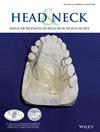Pembrolizumab plus cetuximab with neoadjuvant chemotherapy for head and neck squamous cell carcinoma
Abstract
Purpose
Head and neck cancer cells commonly express programmed death ligand 1 (PD-L1) and epidermal growth factor receptor (EGFR), both of which play pivotal roles in the antitumor cellular immune response. Pembrolizumab, a PD-1 inhibitor, and cetuximab, an EGFR inhibitor, are typically effective agents combined with neoadjuvant platinum-based chemotherapy for the treatment of head and neck squamous cell carcinoma (HNSCC). This study aims to evaluate the efficacy and safety of neoadjuvant immunochemotherapy in patients with HNSCC.
Methods
Patients with HNSCC underwent radical surgery and complete cervical lymph node dissection following neoadjuvant immunochemotherapy at RenJi Hospital from January 2021 to June 2024 were retrospectively analyzed. The primary endpoint was major pathological response (MPR). We further explored the relationship between the efficacy and immune estimators.
Findings
Twenty-one patients were enrolled in this retrospective study. The MPR was 66.7%, including 11 patients who achieved a pathological complete response (pCR). The overall response rate (ORR) was 90.5%, and the complete response (CR) rate was 28.6%. The oropharynx, as the primary site, was the sensitive tumor type to neoadjuvant immunochemotherapy. The most common adverse event (AEs) was anemia (61.9%). No grade 4 AE or delayed surgery was reported. Laryngeal preservation rates were 90.9% (10/11), and pathological findings confirmed negative surgical margins for all patients. Moreover, pre-treatment peripheral lymphocyte count, monocyte count, and platelet to lymphocyte ratio (PLR) displayed a significant correlation with the treatment response.
Conclusion
Pembrolizumab plus cetuximab with chemotherapy for patients with HNSCC is a feasible and safe clinical protocol fulfilling organ preservation and life quality improvement. Pre-treatment peripheral immune estimators could help to screen patients who may respond to the neoadjuvant immunochemotherapy.

 求助内容:
求助内容: 应助结果提醒方式:
应助结果提醒方式:


